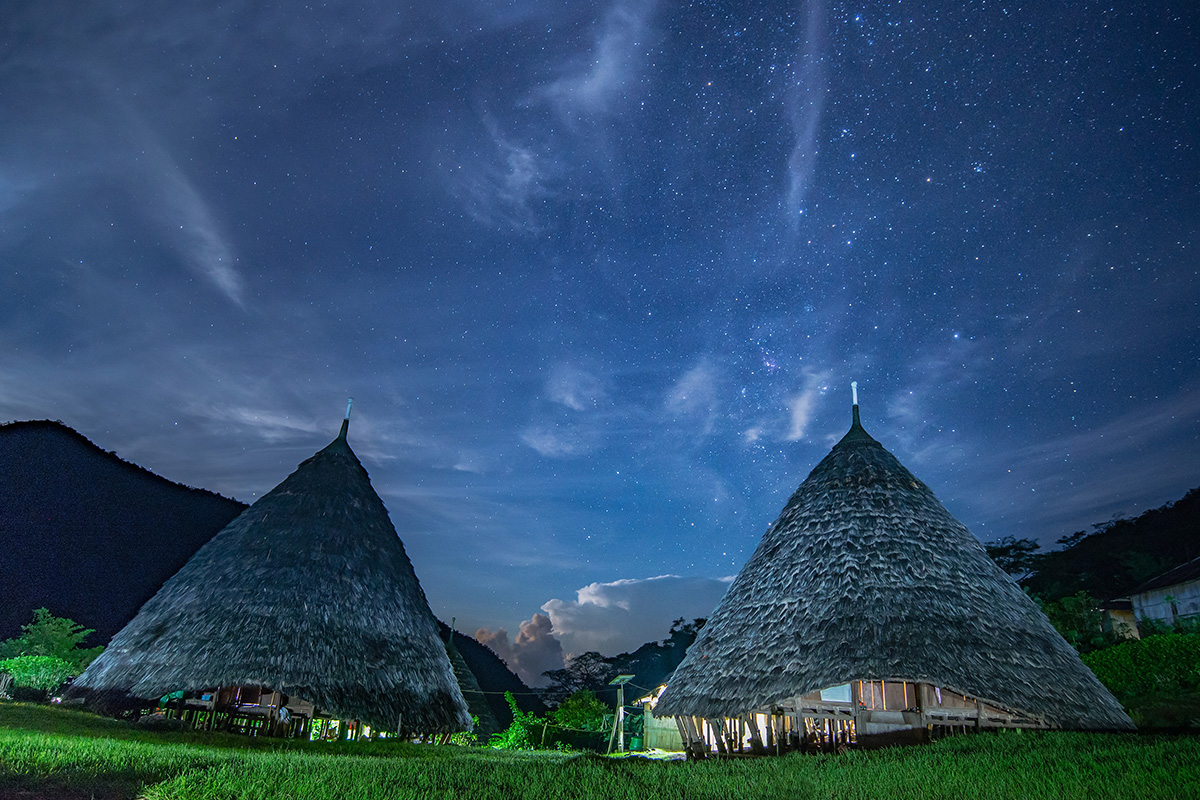Hey Sobat Pesona, have you heard about Wae Rebo Traditional Village? Located in Manggarai Regency on the island of Flores, East Nusa Tenggara, this tourist village received the Top Award of Excellence from UNESCO at the UNESCO Asia Pacific Heritage Awards in 2012, announced in Bangkok on August 27, 2012. Curious about what makes Wae Rebo so unique? Keep reading to find out!
Wae Rebo is a small traditional village located far from urban areas. The village is situated about 1,100 meters above sea level, and reaching it requires a 3-4 hour hike from Denge Village. Surrounded by beautiful mountains and the lush Todo Forest, rich in vegetation, the area is home to orchids, various types of ferns, and the melodic sounds of birds, making the atmosphere even more cheerful. Keep in mind, there is no mobile phone signal in this village, and electricity is only available from 6 to 10 PM. The weather is also relatively cool, especially during the dry season. So, don’t forget to bring a jacket if you plan to visit Wae Rebo!
The founder of Wae Rebo was a man named Empu Maro. He established the village about 100 years ago, and it has been preserved by the local people until now, reaching the 18th generation. One of the unique features of Wae Rebo is the Mbaru Niang traditional house, which is tall and conical in shape, with a thatched roof made from lontar palm leaves that covers the house from top to bottom.
The Mbaru Niang house has five levels, each designed for a specific purpose. The first level, called lutur or the tent, is where the extended family lives. The second level, called lobo or the loft, is used to store food and belongings. The third level, called lentar, is for storing seeds for the next planting season. The fourth level, lempa rae, is where food supplies are kept in case of drought. The fifth and topmost level, hekang kode, considered the most sacred, is used for offerings to the ancestors.
There is also one house dedicated to rituals for the people of Wae Rebo. Although the majority of the villagers are Catholic, they still practice traditional beliefs. This house holds sacred heirlooms, including a drum and gong.
With a small population of about 1,200 people, the village consists of 7 houses. The villagers' staple food is cassava and corn, but they also grow coffee, vanilla, and cinnamon, which they sell at the market about 15 km away. Recently, Wae Rebo has gained popularity as a tourist destination for both domestic and international ecotourism enthusiasts, which has helped improve the village's economy.

To visit Wae Rebo, Sobat Pesona can start the journey from Komodo Airport in Labuan Bajo. From there, head to Ruteng City, which can be reached by travel car or private car. After a 3-4 hour drive, continue the journey by motorcycle for another 3-4 hours to Denge, the last village before reaching Wae Rebo Traditional Village.
If you’re curious and want to experience traditional life far from the hustle and bustle of urban life, the people of Wae Rebo will warmly welcome you! But remember to always follow health protocols, such as washing your hands regularly, maintaining distance from others, and wearing a mask in public spaces. Don’t forget to complete your vaccination with a booster for a comfortable and healthy travel experience.
Wae Rebo is also close to Labuan Bajo’s popular tourist destinations. If you want to know more about Labuan Bajo, you can check out the article here!














